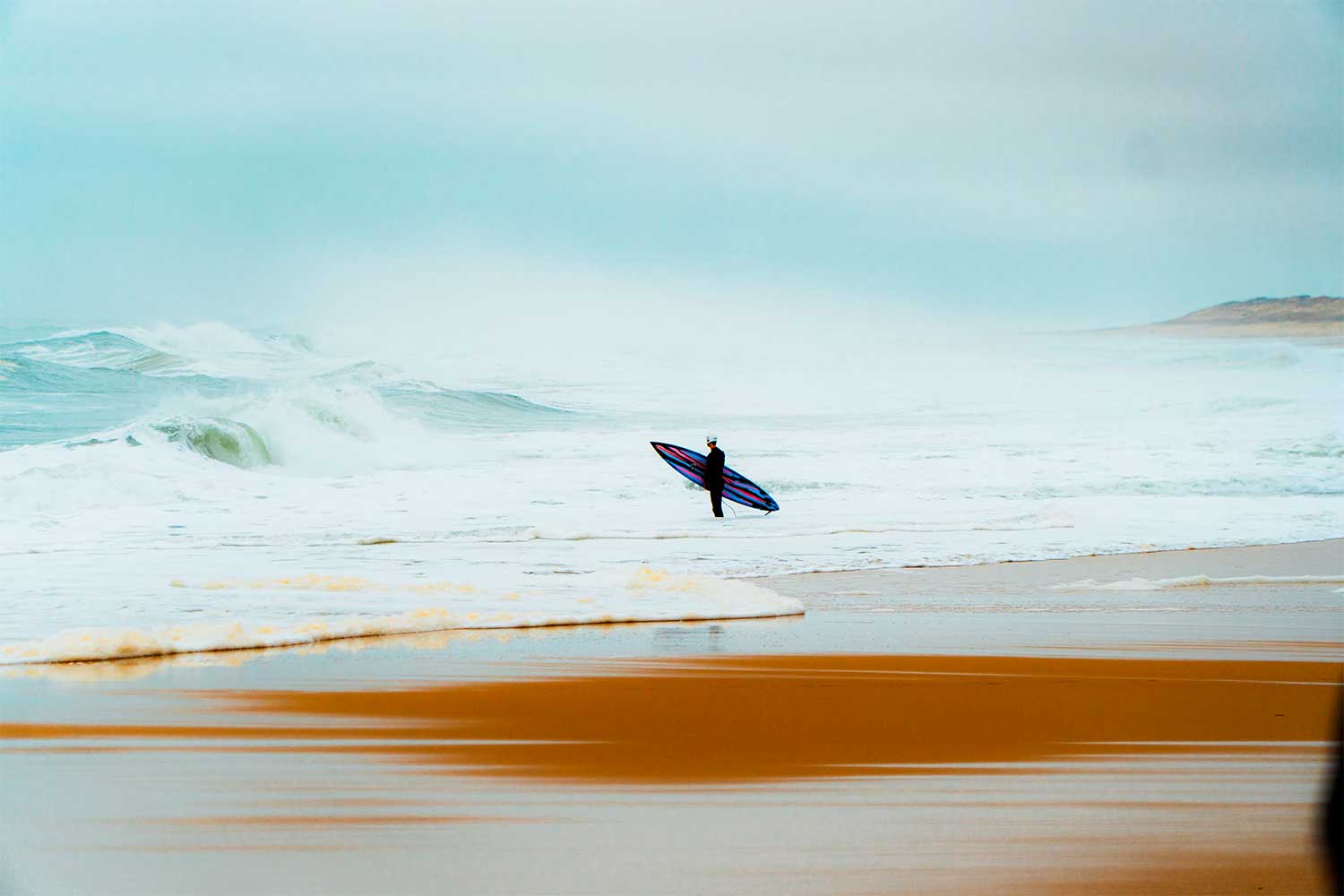A technical guide to the best surf spots on the Atlantic coast: conditions, levels, crowds, seasonality, access.
Surfing in France has been one of the most popular board sports for several decades. The Atlantic coast, stretching from the Basque Country to the Vendée coast, offers ideal natural conditions: regular swells, sandy bottoms, and western exposure. This configuration makes the Atlantic coast one of the most consistent areas for anyone wondering where to surf in France, whether you’re a seasoned pro or a beginner.
The density of spots between the tip of Brittany and the Spanish border offers a diversity rarely matched in Europe. From La Torche to Lacanau, from Capbreton to Guéthary, the configurations vary greatly: beach breaks, reef breaks, powerful currents, unpredictable rip currents, or long glassy straights depending on the season. But not all these beaches are suited to the same profiles. Some are overcrowded in summer, while others remain quiet in the off-season.
The surfing market in France generates significant economic benefits. Hossegor, for example, attracts more than 400,000 visitors during the summer season alone. France also hosts major World Surf League Tour competitions, including the Quiksilver Pro France. These elements form an ecosystem that goes far beyond the sport itself, including schools, shapers, specialized accommodation, and events. In this article, we analyze the best surf spots on the Atlantic coast according to technical and practical criteria.
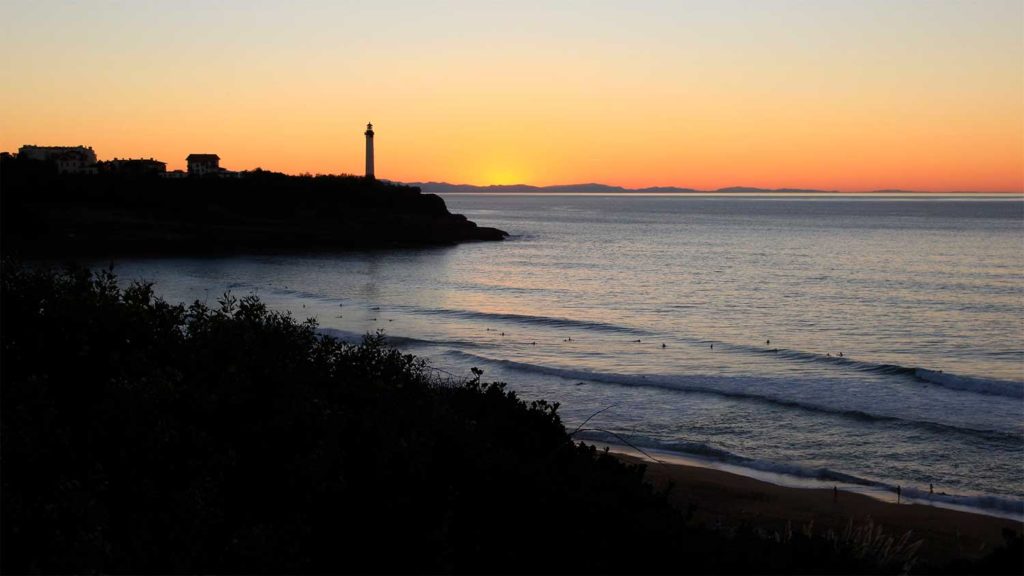
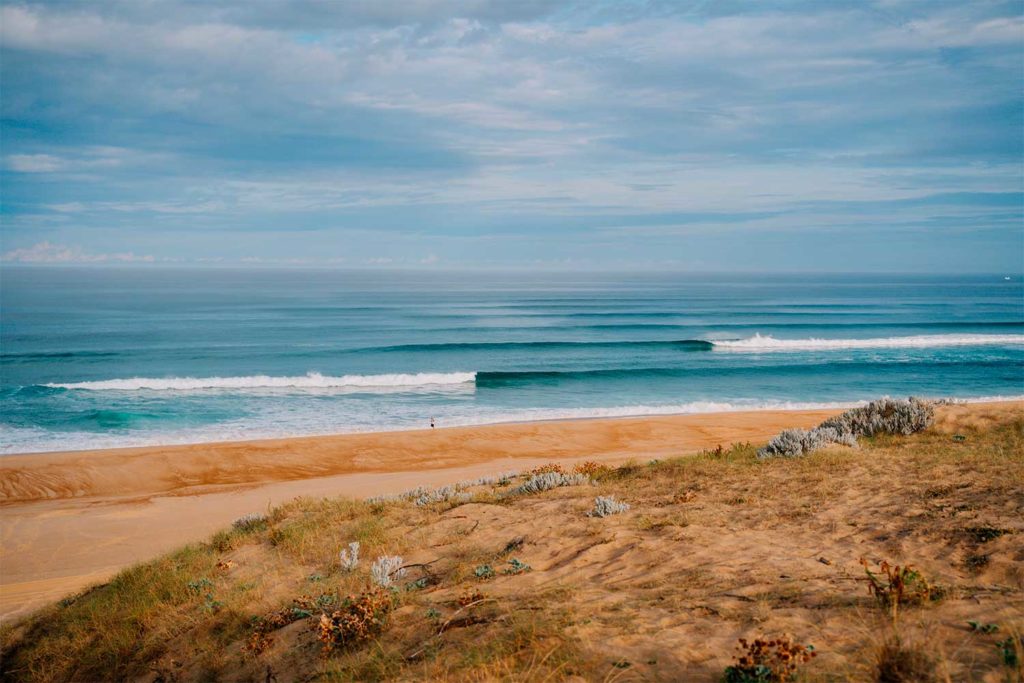
An analysis of the coastline from Brittany to the Basque Country
The French Atlantic coastline stretches over 1,200 kilometers, from the coast of Finistère to the Basque beaches. While surfing in France is practiced along the entire coastline, some sections offer more consistent and varied waves than others. The swell conditions generated by North Atlantic depressions, combined with a varied topography, create beaches suitable for all levels.
Finistère: exposed but demanding spots
La Torche, in southern Finistère, remains the most structured spot in Brittany. It faces due west, exposed to long, consistent swells. Waves frequently reach 1.5 to 2.5 meters in autumn. In winter, swells can exceed 3 meters with a prevailing westerly wind, making surfing the preserve of experienced surfers. Outside the summer season, crowds remain moderate.
The Vendée: more accessible beach breaks
The Plage des Dames in Noirmoutier and Bud Bud in Longeville-sur-Mer offer gentler waves, ideal for learning. Conditions are less unpredictable, with swells of less than 1.5 meters in summer. However, easterly winds are rare, often making the water choppy with no morning windows.
Les Landes: the most consistent area
Between Biscarrosse and Capbreton, Les Landes offers a unique line-up of powerful beach breaks. Hossegor is the center of gravity for European surfing. La Gravière, in particular, produces tubular waves reaching 3 meters, attracting expert surfers. The sandy bottom changes regularly, requiring a precise reading of the banks. The high summer crowds can make surfing difficult at times. Spring and fall offer better windows with long swells and more favorable winds.
The Basque Country: diversity and technicality
The Basque coast offers a wide variety of configurations in a small area. Guéthary offers a long right-hand break that works with northwesterly swells exceeding 1.5 meters. It breaks on a reef, making access technical. Nearby Lafitenia is a gentler wave, but it can reach 200 meters in good conditions. Further south, Hendaye remains a beach for beginners with waves suitable for novices. It gets crowded in summer, but fall and winter offer better quality sessions.
A seasonal and meteorological overview of conditions
Surfing on the Atlantic coast is highly dependent on the seasons. Understanding the meteorological patterns will help you maximize your sessions and plan your trips.
Summer: easy access but irregular conditions
From June to August, the coast is subject to high pressure systems that block the Atlantic swell. Waves rarely exceed 1 meter, except in isolated cases. Thermal winds from the northeast blow in the afternoon, degrading water quality. Nevertheless, the water is warmer (between 18 and 22°C), and the long days make it easier to surf, especially for beginners. Surf schools are fully booked in the Landes and Basque Country, with group lessons starting at $35 per hour.
Autumn: the most consistent season
From September to November, North Atlantic depressions become active again. The swell becomes longer, with a period of 10 to 15 seconds, and frequent waves of 1.5 to 2 meters. The winds become more variable, with often glassy conditions in the morning. The water remains surfable until November (16°C on average), but the spots empty out, leaving room for more experienced surfers.
Winter and spring: a contrasting period
Winter brings very large swells, sometimes exceeding 4 meters. Conditions can be dangerous, with strong currents and unstable rip currents. Wearing a 5/4 mm wetsuit with a hood and gloves is essential. Spring, on the other hand, offers milder conditions with a gradual balance between swell, temperature, and light.
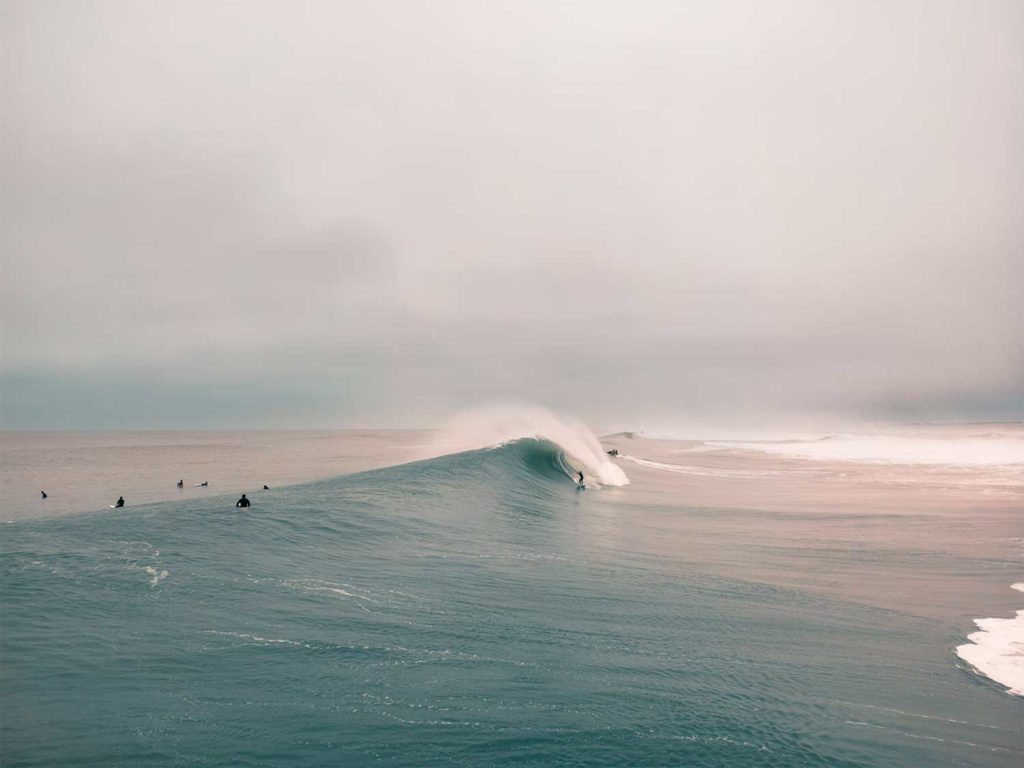
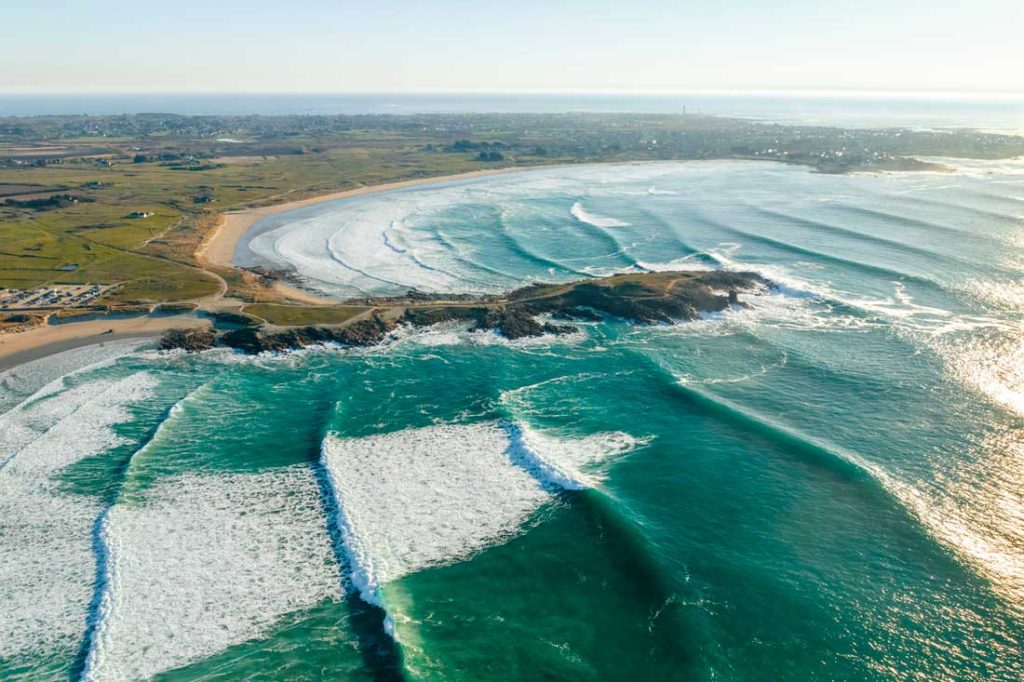
Criteria for evaluating the best surfing beaches
The analysis of a good spot is based on objective parameters: orientation, bathymetry, accessibility, and crowds. Certain technical criteria can be used to rank the best surfing spots.
- Swell orientation: a west/northwest exposure guarantees maximum reception of the Atlantic swell.
- Quality of the seabed: compact sand or a stable reef creates regular waves. Mobile sandbanks are less reliable.
- Access and infrastructure: parking, showers, surf schools. Hossegor, Lacanau, and Hendaye are well equipped.
- Current risk/rip currents: rip currents are a major hazard in the Landes region. Some beaches are only monitored in summer.
- Crowds: some waves, although high quality, are almost impossible to surf due to the crowds (e.g. Parlementia in July).
A practical and economical approach to surfing in France
Surfing in France represents a significant economic segment. A week’s stay in the Landes for an independent surfer costs around $800 (accommodation, food, travel, equipment included). Board rental varies between $15 and $25 per day, while a lesson + rental package costs around $200 for 5 days.
The development of infrastructure around surfing has also shaped the region, with secure surfing areas, training centers, and surf camps. Local policy is banking on this tourist attraction, particularly in Biarritz and Seignosse. Some municipalities even regulate access to spots to limit overcrowding.
Choosing where to surf in France is not just a matter of looking at a tourist map. You need to take into account meteorological and logistical criteria, as well as technical criteria depending on your level. The best surfing beaches combine consistent swells, accessibility, good waves, and a suitable environment. Surfing on the Atlantic coast is therefore an activity that requires a rigorous and informed approach, far beyond the clichés.
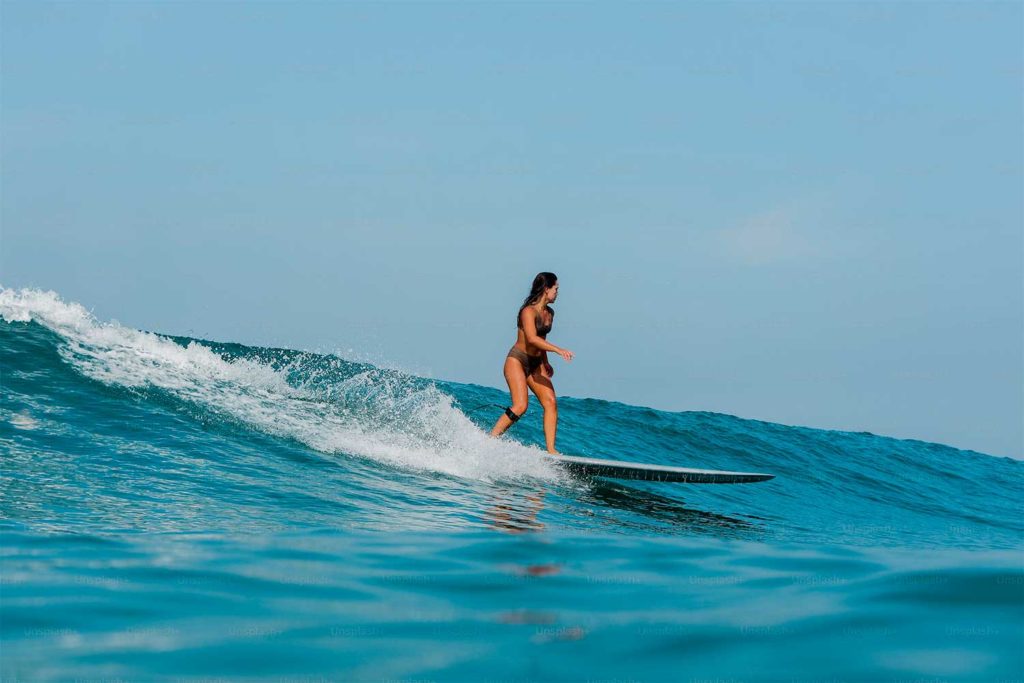
XperienceFrance is your travel specialist in France.
